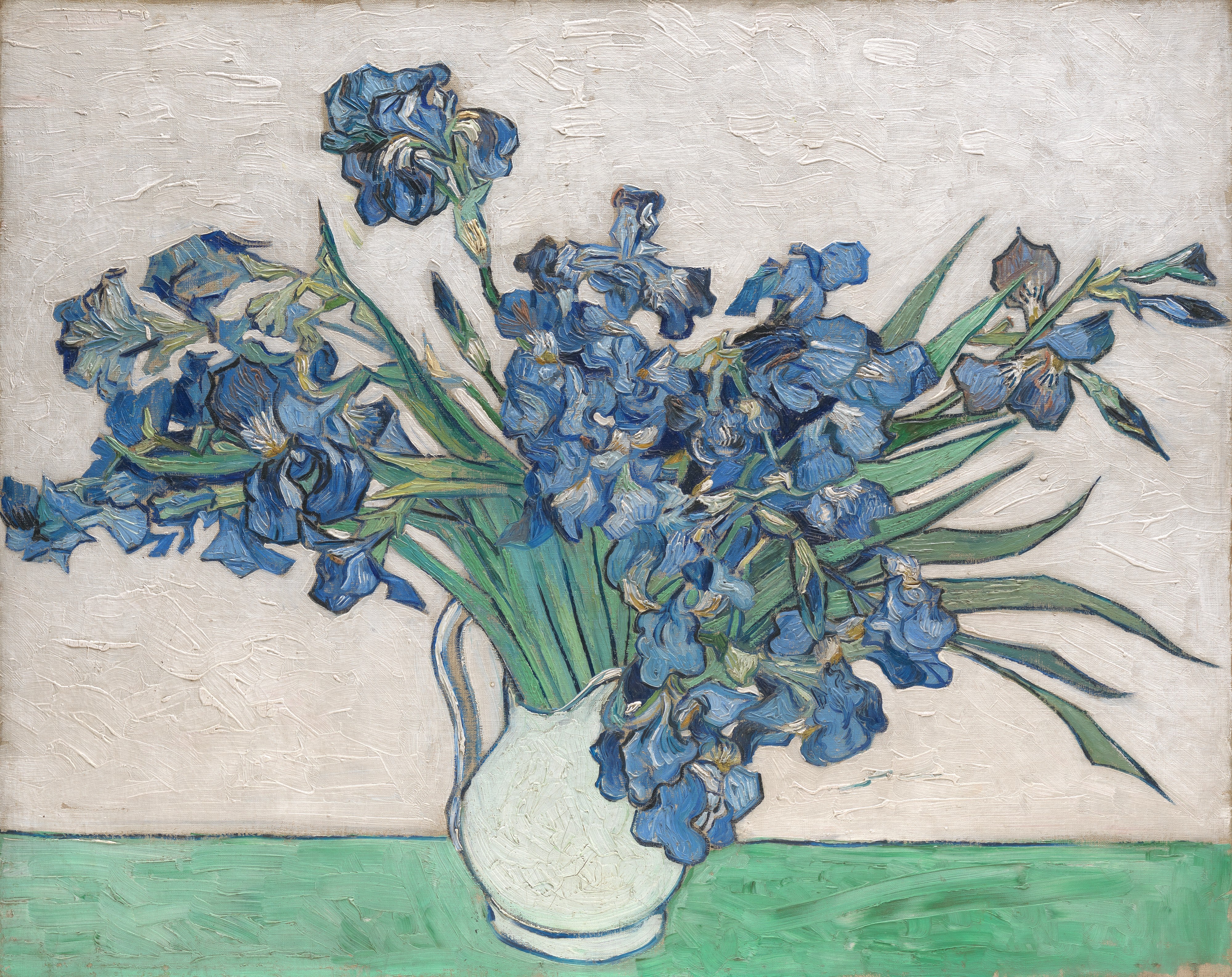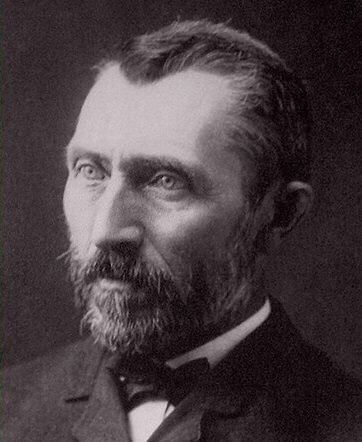
Irises
In May 1890, on the cusp of leaving the asylum at Saint-Rémy-de-Provence, Vincent van Gogh created a radiant quartet of floral still lifes—his final and most ambitious works in the genre during his yearlong confinement. These four paintings, composed of two bouquets of irises and two of roses, stand as vibrant celebrations of renewal and spring, imbued with the emotional intensity and refined technique that marked the closing chapter of his life. Though painted in isolation, they are anything but somber. Instead, they burst with life, color, and a searching sense of beauty.
The Museum’s "Irises" belongs to this series and exemplifies Van Gogh’s desire to achieve what he described as a “harmonious and soft” effect. He set the lush, curling violet-blue blossoms against a pink background, a subtle interplay of complementary tones designed to create a soothing, lyrical atmosphere. Over time, however, the original pink has faded to a paler hue due to Van Gogh’s use of fugitive red pigments, revealing how the artist’s daring experiments with color sometimes exceeded the durability of his materials.
Despite this loss, the composition retains its power—each iris rendered with sculptural intensity, its ruffled petals vibrating with energy. The arrangement is both exuberant and meditative, capturing nature not with botanical precision but with emotional resonance. The flowers are alive with movement, and yet the scene holds stillness, as if suspended in a moment of fragile peace.
This painting, along with its companion piece "Roses" (1993.400.5), now displayed in the adjacent gallery, was kept by Van Gogh’s mother, Anna Cornelia van Gogh-Carbentus, until her death in 1907. That personal connection adds another layer of poignancy—these were not just works of art, but intimate gifts, tokens of hope and healing sent home during one of the most turbulent periods of the artist’s life.
In these canvases, Van Gogh transformed the ordinary language of flowers into a luminous expression of inner life—fusing form and color into something tender, optimistic, and enduring.
Choose options


Irises
About Artist

Vincent van Gogh
